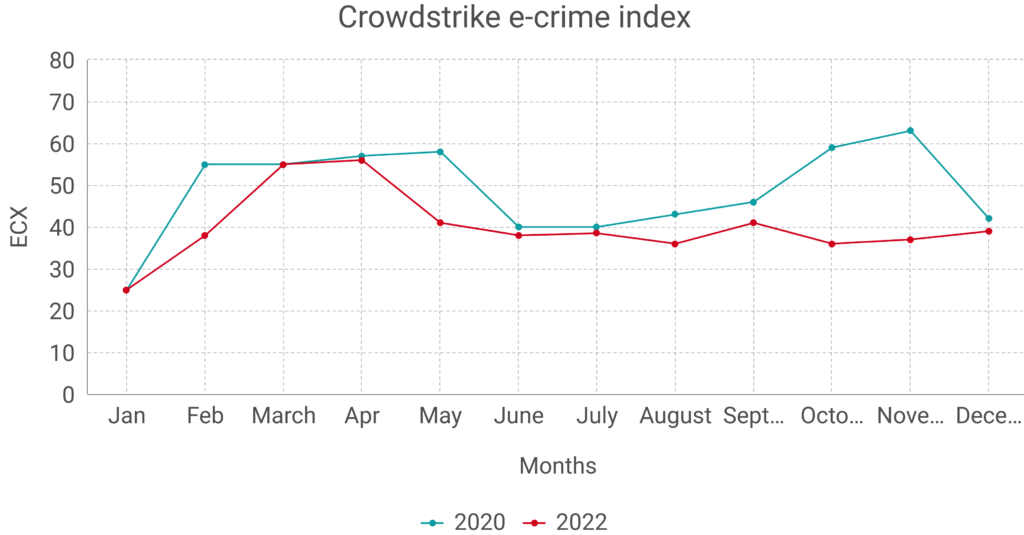Types of Cyber Threats Addressed by AI

In the vast cybersecurity landscape, threats lurk around every digital corner, ranging from stealthy malware to cunning phishing schemes. However, with the advent of artificial intelligence (AI), our defenses have become more robust. AI is a vigilant guardian equipped with sophisticated algorithms and analytical prowess to detect and mitigate cyber threats.
Malware Detection:
- AI-powered systems excel at detecting and neutralizing various forms of malware, including viruses, trojans, and worms. By analyzing patterns and behaviours, AI can swiftly identify malicious code and prevent it from causing harm to systems and data.
Phishing Detection:
- Phishing emails remain a prevalent threat, attempting to trick unsuspecting users into divulging sensitive information. AI algorithms can analyze email content, sender behaviour, and contextual information to identify phishing attempts and alert users or block malicious emails before they reach their targets.
Insider Threat Detection:
- Insider threats pose significant risks to organizations, as malicious insiders or unwitting employees may compromise sensitive data or systems. AI-powered solutions monitor user behaviour, detect anomalies in access patterns, and flag suspicious activities that may indicate insider threats, enabling proactive intervention and mitigation.
Ransomware Protection:
- Ransomware attacks encrypt valuable data and demand ransom payments for decryption, causing significant disruptions and financial losses. AI-enhanced security systems can detect ransomware activity by analyzing file behaviour, network traffic, and system interactions, enabling organizations to prevent or mitigate ransomware attacks before they cause irreparable damage.
Understanding the diverse threats AI addresses becomes paramount as we delve deeper into cybersecurity. By recognizing the evolving tactics employed by cybercriminals, we empower ourselves to deploy AI-driven defenses effectively, fortifying our digital environments against potential breaches and intrusions.
Join us on this exploration as we unravel the intricate web of cyber threats mitigated by AI, shedding light on how this transformative technology enhances our collective resilience in the face of digital dangers.
AI-Powered Threat Detection and Prevention

In cybersecurity, AI emerges as a stalwart defender, fortifying organizations against evolving threats with its proactive detection and prevention capabilities.
Real-time Threat Detection:
- AI’s prowess lies in its ability to swiftly identify emerging threats in real-time, analyzing vast datasets to discern patterns indicative of malicious activities. This agility empowers security teams to respond promptly, thwarting potential breaches before they escalate.
Behavioural Analysis:
- By leveraging advanced behavioural analysis, AI discerns user and network behaviour anomalies, flagging deviations from the norm as potential security risks. This insight enables preemptive action, mitigating threats and minimizing vulnerabilities.
Anomaly Detection:
- AI’s adeptness in anomaly detection enables the identification of irregularities within network traffic, system logs, and user interactions. This vigilant monitoring ensures early threat identification, bolstering cybersecurity resilience and safeguarding critical assets.
Threat Intelligence Integration:
- Seamlessly integrating threat intelligence feeds, AI augments its detection capabilities by correlating security events with known threat indicators. This strategic alliance empowers organizations with actionable insights, facilitating informed decision-making and proactive defense measures.
Through sophisticated machine learning algorithms and real-time analytics, AI empowers security professionals to stay ahead of cyber adversaries, fortifying defenses and ensuring organizational resilience in the face of evolving threats.
Real-time Incident Response with AI:
AI plays a vital role in responding to threats quickly and effectively in cybersecurity.
Automated Incident Triage:
AI helps prioritize security alerts, allowing teams to promptly focus on the most critical issues. The automated workflow accelerates response times, enabling security teams to focus on critical incidents, minimizing exposure, and mitigating risks.
Threat Containment:
- AI swiftly isolates compromised systems, preventing attackers from causing further harm. By swiftly containing threats, AI empowers security teams to mitigate potential damage and preserve operational continuity.
Incident Forensics:
- AI analyzes security data to understand how incidents occur, helping teams identify the root causes, assess impact, and implement targeted remediation measures, enhancing overall incident response effectiveness.
Incident Response Automation:
- AI automates response actions, ensuring a fast and consistent handling of incidents. This automation reduces manual intervention and provides consistent and standardized response procedures, optimizing resource utilization and minimizing response times.
By using AI for incident response, organizations can better protect themselves from cyber threats, keeping their systems and data safe. Join us as we explore how AI powers real-time incident response, making cybersecurity operations more effective and resilient.
AI in Cloud Security

Cloud security is crucial in the digital era, and the role of AI in cybersecurity is paramount. AI-driven solutions for cloud security leverage advanced algorithms to monitor and analyze cloud environments, detecting and responding to potential threats in real-time.
Cloud Access Security Broker (CASB) Integration:
- CASBs integrate with cloud services, enhancing the role of AI in cybersecurity by providing visibility and control over data stored in the cloud.
- AI algorithms analyze user behaviour and enforce security policies to prevent unauthorized access, bolstering cloud security measures.
Data Loss Prevention (DLP) in the Cloud:
- DLP solutions leverage AI to classify and protect sensitive data from unauthorized disclosure or exfiltration, playing a crucial role in AI-driven cybersecurity.
- AI continuously monitors data transactions, identifying and blocking suspicious activities to prevent data breaches and uphold the integrity of cloud environments.
Cloud Workload Protection:
- AI-driven workload protection is integral to the role of AI in cybersecurity, as it secures applications and services running in the cloud from cyber threats.
- By analyzing workload behaviour and network traffic patterns, AI detects and mitigates potential attacks in real-time, bolstering cloud security defenses.
By integrating AI into cloud security measures, organizations strengthen the role of AI in cybersecurity, ensuring the confidentiality, integrity, and availability of data stored in the cloud. These AI-driven solutions provide proactive defense mechanisms, safeguarding against unauthorized access, data breaches, and other cyber threats.
AI in Threat Intelligence

Threat intelligence plays a vital role in staying ahead of cyber threats, and artificial intelligence (AI) enhances its effectiveness in cybersecurity. AI-powered solutions for threat intelligence utilize advanced algorithms to collect, process, and interpret vast amounts of data from various sources, identifying emerging threats and trends.
Threat Data Collection:
- AI automates the collection of threat data from diverse sources such as open-source intelligence, dark web forums, and security feeds, amplifying the role of AI in cybersecurity.
- Machine learning algorithms filter and categorize threat data, extracting valuable insights to inform threat intelligence analysis.
Threat Data Analysis:
- AI-driven threat intelligence platforms analyze collected data to identify patterns, correlations, and anomalies indicative of cyber threats.
- Natural language processing (NLP) and machine learning techniques enable AI to extract actionable intelligence from unstructured data sources, enhancing the role of AI in cybersecurity analysis.
Threat Intelligence Sharing:
- AI facilitates the sharing of threat intelligence among organizations and security communities, strengthening collective defense mechanisms.
- Automated threat intelligence sharing platforms leverage AI to anonymize and prioritize threat data, enabling organizations to respond effectively to emerging threats.
Threat Hunting:
- AI-powered threat-hunting platforms proactively search for indicators of compromise (IOCs) and suspicious activities within network environments.
- Machine learning algorithms analyze historical and real-time data to identify potential threats, empowering security teams to mitigate risks before they escalate.
By harnessing AI in threat intelligence, organizations enhance the role of AI in cybersecurity, enabling proactive threat detection, rapid response, and collaborative defense strategies. These AI-driven solutions provide actionable insights and proactive defense measures, empowering security teams to stay ahead of evolving threats and protect digital assets effectively.
AI in Identity and Access Management (IAM)

Identity and access management (IAM) is critical for controlling access to sensitive data and resources, and artificial intelligence (AI) enhances its capabilities in cybersecurity. AI-powered IAM solutions leverage advanced algorithms to analyze user behaviours, detect anomalies, and enforce real-time access controls.
Adaptive Access Control:
- AI enables adaptive access control mechanisms that dynamically adjust user privileges based on behavior analysis and risk assessment.
- Machine learning algorithms continuously learn from user interactions to adapt access policies, enhancing security without compromising user experience.
Identity Verification:
- AI enhances identity verification by analyzing biometric data, behavioural patterns, and contextual information to authenticate users.
- Facial recognition, voice recognition, and behavioural biometrics bolster identity verification accuracy and reliability, strengthening the role of AI in cybersecurity.
Privileged Access Management (PAM):
- AI-driven PAM solutions monitor and control privileged user activities, minimizing the risk of insider threats and unauthorized access.
- Machine learning algorithms detect suspicious behaviour among privileged users, triggering alerts and automated response actions to prevent security breaches.
User Behavior Analytics (UBA):
- AI-powered UBA platforms analyze user behaviour across digital environments to detect deviations from standard patterns.
- Behavioural analytics algorithms identify insider threats, compromised accounts, and unauthorized access attempts, augmenting the role of AI in cybersecurity monitoring.
By incorporating AI in IAM, organizations enhance the role of AI in cybersecurity, strengthening access controls, mitigating insider threats, and improving overall security posture. These AI-driven solutions provide adaptive authentication mechanisms, identity verification enhancements, and proactive threat detection capabilities, empowering organizations to safeguard digital identities and sensitive data effectively.
. AI in Security Compliance and Governance

Security compliance and governance are essential for organizations to adhere to regulatory requirements and industry standards, ensuring sensitive data’s confidentiality, integrity, and availability. With artificial intelligence (AI) integration, security compliance and governance processes become more efficient, automated, and adaptive, enabling organizations to manage their cybersecurity posture effectively.
Regulatory Compliance Automation:
- AI-powered compliance automation tools streamline adhering to GDPR, HIPAA, or PCI DSS regulations.
- Machine learning algorithms assist in interpreting complex regulatory requirements, generating compliance reports, and automating audit workflows.
Policy Enforcement:
- AI-driven policy enforcement mechanisms monitor security policies across the organization’s IT infrastructure.
- By continuously assessing compliance with security policies, AI systems identify violations and automatically apply remediation actions to ensure adherence to established guidelines.
Compliance Reporting:
- AI-enabled compliance reporting tools analyze security data to generate comprehensive reports on the organization’s compliance status.
- Natural language processing (NLP) algorithms facilitate the creation of detailed compliance reports, providing insights into regulatory compliance gaps and areas for improvement.
Audit Trail Management:
- AI-enhanced audit trail management solutions capture and analyze logs of user activities, system changes, and security events.
- By applying machine learning algorithms, these solutions detect suspicious activities, unauthorized access attempts, and potential compliance violations, facilitating forensic investigations and audit trail analysis.
By leveraging AI in security compliance and governance, organizations can automate repetitive tasks, improve accuracy in regulatory adherence, and proactively identify and address compliance gaps. AI-driven solutions enable organizations to maintain compliance with regulatory requirements, enhance risk management practices, and uphold trust and integrity in their operations.
Challenges and Considerations in AI-driven Cybersecurity
Implementing AI-driven cybersecurity solutions introduces several challenges and considerations organizations must address to maximize effectiveness and ensure optimal performance. These challenges include Data Privacy Concerns:
- AI-driven cybersecurity systems rely heavily on data for training models and making decisions, raising concerns about data privacy and compliance with regulations such as GDPR and CCPA.
- Organizations must implement robust data protection measures, including encryption and anonymization techniques, to safeguard sensitive information and maintain regulatory compliance.
Algorithm Bias:
- AI algorithms may exhibit bias based on the data they are trained on, leading to skewed outcomes and inaccurate predictions.
- Addressing algorithm bias requires careful selection and curation of training data and ongoing monitoring and evaluation of algorithm performance to identify and mitigate biases.
Skills Gap:
- Deploying and managing AI-driven cybersecurity solutions requires specialized skills and expertise organizations may need to gain.
- Bridging the skills gap necessitates investment in training and upskilling programs for cybersecurity professionals to ensure they have the knowledge and capabilities to leverage AI technologies effectively.
Ethical Considerations:
- AI-driven cybersecurity systems raise ethical concerns about transparency, accountability, and potential unintended consequences.
- Organizations must adhere to ethical guidelines and principles in developing and deploying AI technologies, ensuring they are used responsibly and ethically to protect against cyber threats.
Addressing these challenges and considerations is essential for organizations seeking to harness the full potential of AI-driven cybersecurity solutions while mitigating risks and ensuring alignment with ethical and regulatory standards. By proactively addressing these issues, organizations can maximize the effectiveness of AI in enhancing their cybersecurity defenses and safeguarding against emerging threats.
Future Trends and Innovations in AI Cybersecurity
As the cybersecurity landscape continues to evolve rapidly, driven by advancements in technology and the increasing sophistication of cyber threats, several emerging trends and innovations in AI cybersecurity are poised to shape the future of digital security. These include:
AI Explainability and Interpretability:
- Enhancements in AI explainability and interpretability will enable organizations to understand better how AI-driven cybersecurity systems make decisions and predictions.
- Transparent AI models will facilitate trust and confidence in automated security processes, empowering organizations to leverage AI technologies more effectively for threat detection and response.
Quantum Computing and AI:
- The intersection of quantum computing and AI holds the potential to revolutionize cybersecurity by enabling the development of ultra-secure cryptographic algorithms and advanced threat detection techniques.
- Quantum-enhanced AI algorithms will enhance the speed and accuracy of cybersecurity analytics, allowing organizations to stay ahead of rapidly evolving cyber threats.
AI-driven Deception Technologies:
- AI-powered deception technologies will emerge as a critical component of cybersecurity defense strategies, leveraging advanced machine learning algorithms to create realistic decoys and traps to deceive and deter attackers.
- These AI-driven deception techniques will enhance threat detection capabilities and enable organizations to defend against sophisticated cyber-attacks proactively.
The democratization Role of AI in Cybersecurity:
- .The democratization of AI in cybersecurity will democratize access to advanced cyber defense capabilities, making AI-driven security solutions more accessible to organizations of all sizes and resource levels.
- Cloud-based AI platforms and managed security services will enable organizations to leverage AI technologies without requiring significant upfront investment in infrastructure or expertise.
By staying abreast of these future trends and innovations in AI cybersecurity, organizations can effectively adapt to emerging threats and challenges in the digital landscape. Embracing AI-driven cybersecurity solutions and leveraging cutting-edge technologies will be vital to maintaining robust cyber defenses and safeguarding against evolving cyber threats.
Conclusion:
In conclusion, the role of AI in cybersecurity is vital. It is our digital protector, helping us defend against ever-changing online threats. AI quickly spots and responds to security issues, making our digital world safer. By using AI technology, we can keep our digital assets secure and stay protected against new threats. As we continue to face challenges in cybersecurity, integrating AI into our defense plans is vital for a safer online future.







